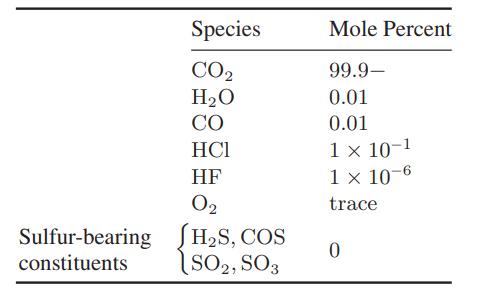The Soviet Venera VII probe, which reached Venus on December 15, 1970, found the following conditions on
Question:
The Soviet Venera VII probe, which reached Venus on December 15, 1970, found the following conditions on the planet surface:

Interferometric measurements indicate that there is only a 10 to 20 K temperature variation across the planet, and that the coldest region lies at the equator. Radar astronomy measurements suggest that the dielectric constant of the Venus surface is typical of mineral silicates. Furthermore, from spectroscopic observations it has been concluded that the approximate atmospheric composition of Venus is

Since the temperature of Venus is so high, and the planet is quite old, it may be assumed that all chemical reactions occurring between the atmosphere and the surface minerals are in chemical equilibrium.
The following reactions are thought to occur:

Determine whether the chemical equilibrium assumption is consistent with the reported data. Data: For FeO·SiO2, ΔfG° = −1.060 MJ/mol and ΔfH° = −1.144 MJ/mol; other Gibbs energy of formation data are given in Appendix A.IV and the Chemical Engineers’ Handbook.13 The heat capacity of the solid species is /cr
![Cp = a +bT+e/T2 J/(mol K); T[=]K Species CaO.SiO, CaCO3 Fe3O4 FeO-SiO SiO2 a 116.94 82.34 172.26 98.28 45.48](https://dsd5zvtm8ll6.cloudfront.net/images/question_images/1700/2/0/3/53565570c0fa0f0d1700203534499.jpg)
Since the temperature is so high, you may assume that the gas phase is ideal.
Step by Step Answer:

Chemical Biochemical And Engineering Thermodynamics
ISBN: 9780470504796
5th Edition
Authors: Stanley I. Sandler





